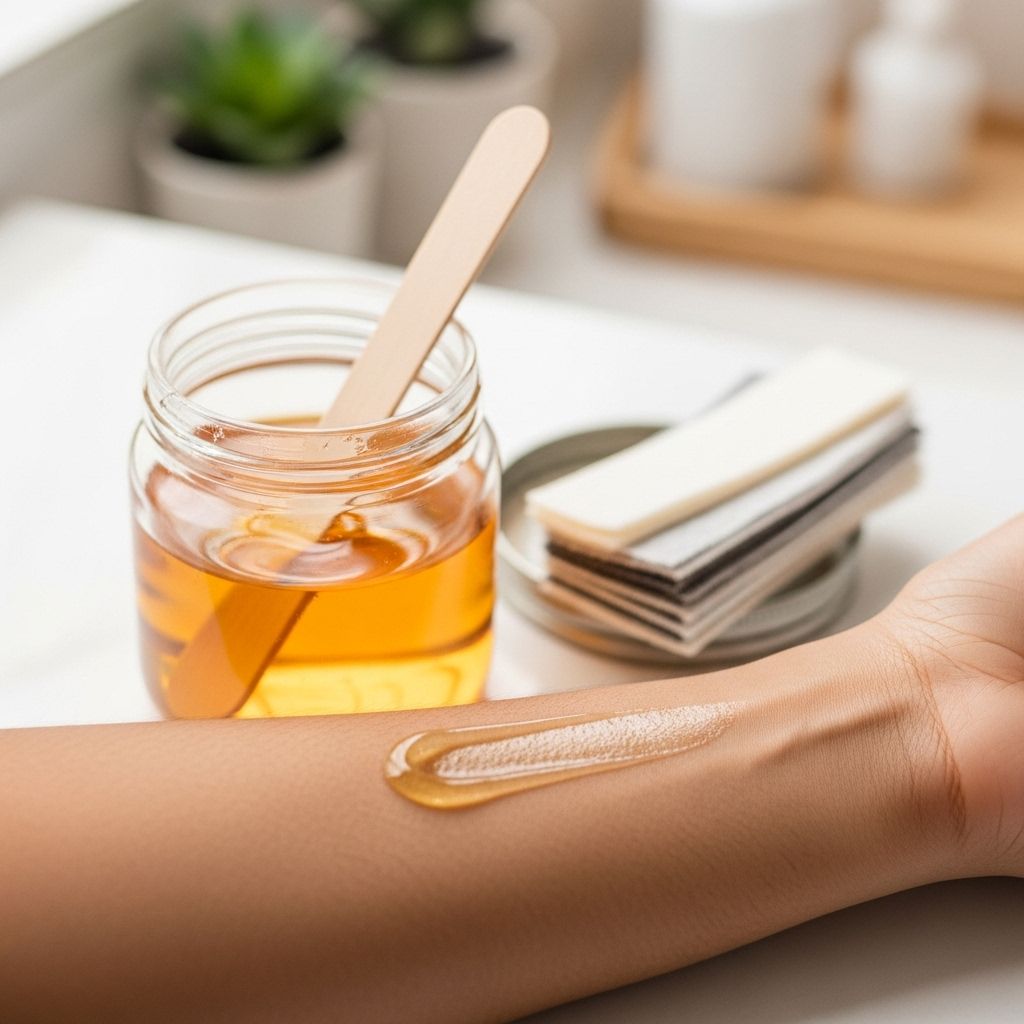DIY Sugar Waxing: A Guide to Making and Using Sugar Wax for Hair Removal
Transform your hair removal routine with this easy-to-make and gentle DIY sugar wax recipe.

Introduction to Sugar Waxing
Sugar waxing, also known as sugaring, is a popular hair removal method that offers several benefits over traditional waxing. It is gentler on the skin, making it suitable for sensitive areas, and can be made easily at home. This guide will walk you through the process of making sugar wax and how to use it effectively for hair removal.
How to Make Sugar Wax
Preparing sugar wax is a straightforward process that requires just a few ingredients: white sugar, lemon juice, water, and sometimes a pinch of salt. The key is to achieve the right consistency, which should be stretchy and slightly sticky. Below are the steps to make sugar wax:
- Ingredients Needed:
– 2 cups white sugar
– ¼ cup lemon juice
– 2 tablespoons water
– 1 teaspoon salt (optional) - Instructions:
1. Combine all ingredients in a medium saucepan and place it on medium-high heat. Avoid stirring initially to prevent sugar crystallization on the sides of the pot. 2. Once the mixture starts boiling, gently swirl the pot to mix the ingredients. 3. Use a candy thermometer to monitor the temperature. Bring the mixture to 260°F (this may take about 5 minutes, depending on the saucepan size). 4. Remove the wax from the heat and transfer it to a prepared glass jar. Quickly cool a small amount of the wax in the freezer to test its consistency. It should be stretchy and not too runny or hard. 5. If necessary, adjust the consistency by reheating the wax slightly or adding more water.
How to Apply Sugar Wax
Applying sugar wax requires a bit of practice to perfect, but the process is rewarding for its results. Here’s how to do it:
Preparing the Skin- Ensure your hair is at least 1/8 inch long for effective removal.- Cleanse your skin thoroughly and dry it completely. Applying the Sugar Wax1.
Scoop the Sugar Wax
: Use your fingertips to scoop out the room temperature sugar wax. Shape it into a small ball using your thumb.2.Mold the Sugar Wax
: Press the sugar ball against the skin in the opposite direction of hair growth. Repeat this motion several times to ensure the wax adheres well.3.Flicking the Wax
: Hold the surrounding skin taut and quickly lift and flick the wax in the direction of hair growth. This motion is key to removing hair from the root.4.Removing Residue
: After waxing, gently wash the area with water to remove any remaining sugar.Benefits of Sugar Waxing
Sugar waxing has several advantages over traditional waxing:
–
Gentle on Skin
: Sugar wax is less irritating and can be used on sensitive areas, making it ideal for those with sensitive skin.-Water Soluble
: Unlike traditional wax, sugar wax is water soluble, making it easier to clean up and reducing the risk of skin irritation.-Long-Lasting Results
: Hair regrowth is finer and slower compared to shaving.Frequently Asked Questions
Q: Is Sugar Waxing Painful?
While it can be a bit uncomfortable, sugar waxing is generally less painful than traditional waxing because it adheres only to the hair and not the skin.
Q: Can I Use Sugar Wax on All Areas of the Body?
Yes, sugar wax can be used on most areas of the body, including sensitive areas like the face, bikini line, and underarms.
Q: How Often Should I Exfoliate After Sugaring?
Exfoliate gently 1-2 times a week to prevent ingrown hairs and promote smooth skin.
Common Mistakes and Tips
To ensure a successful sugaring experience, avoid these common mistakes:
–
Improper Application
: Always apply the sugar wax in the opposite direction of hair growth to avoid ingrown hairs.-Incorrect Consistency
: Ensure the wax is neither too runny nor too hard. Adjust the consistency by reheating or adding water if necessary.-Forget Post-Care
: Exfoliate gently after sugaring to maintain smooth skin and prevent ingrown hairs.With practice and patience, sugar waxing can become your go-to method for hair removal, offering a gentle and effective alternative to traditional waxing.References
Read full bio of medha deb












